
Spleen-Stomach Damp-Heat Syndrome is a common clinical syndrome of the spleen and stomach. With the warming of the Earth’s climate, improvements in living standards, changes in dietary structure, and the abuse of medications, this syndrome has shown an upward trend. It can occur in many diseases across various systems and is closely related to digestive system diseases. Due to the particularity of its pathogenic factors, it poses certain difficulties for clinical diagnosis and treatment.

Professor Yang Chunbo is a renowned expert in traditional Chinese medicine and a leading figure in the academic study of spleen and stomach diseases.
In 1992, he was the first in the country to research Spleen-Stomach Damp-Heat Syndrome and its related diseases. His extensive clinical experience has significant guiding implications. Here, we summarize his treatment strategies and medication experience for Spleen-Stomach Damp-Heat Syndrome.
Understanding of Etiology and Pathogenesis
Etiology
External Factors: Damp-heat pathogenic factors, climate, environment, and various insects.
Internal Factors: Dietary irregularities, excessive thinking, overwork, or inherent weakness of the spleen and stomach.
Pathogenesis
The disease primarily affects the spleen (pi) and stomach (wei), as the spleen governs dampness and is a yin organ, while the stomach governs dryness and is a yang organ. “Damp-heat pathogenic factors, although initially received externally, ultimately affect the spleen and stomach,” as stated by Qing dynasty scholar Zhang Xugu. Internal injuries from diet or inherent weakness of the spleen and stomach can lead to dysfunction and the generation of damp-heat.
The pathology includes both yin and yang aspects, which can present as equal damp and heat, or with a predominance of either dampness or heat. Dampness often stagnates the qi mechanism, which can lead to blood stasis over time. Since dampness is a yin pathogen, it easily stagnates qi; qi is the commander of blood, and prolonged stagnation can lead to blood stasis. Dampness can transform. When the body’s yang qi is strong and heat is predominant, or when yin qi is abundant and dampness is predominant, it can also lead to heat transformation, cold transformation, or even consume qi, damage yang, harm yin, and deplete blood.
Damp-heat can ascend, spread laterally, or descend. When damp-heat resides in the middle jiao, it can ascend to disturb the orifices, cloud the spirit, and affect the lungs; spread laterally to the liver, gallbladder, tendons, and skin; or descend to the bladder, genitalia, and uterus.
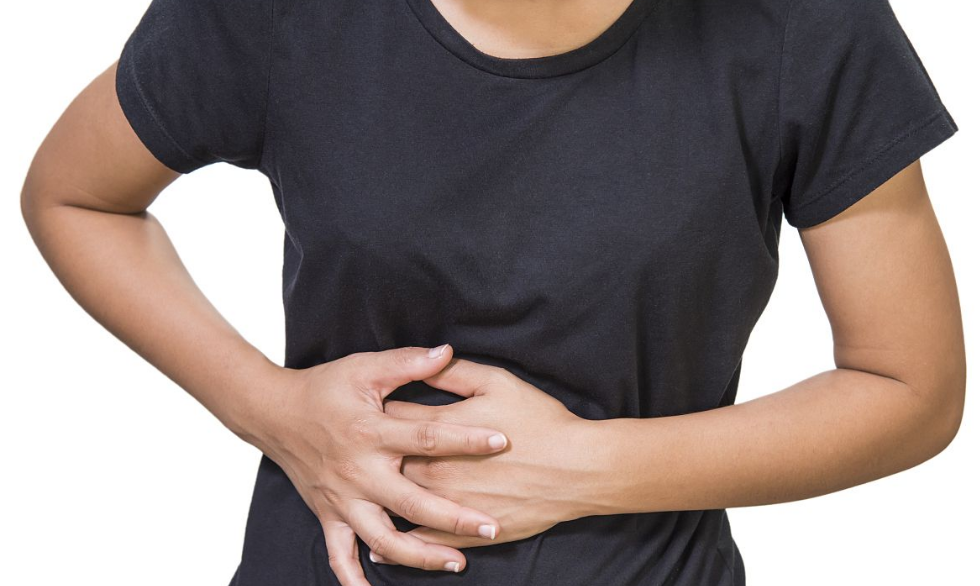
Clinical Characteristics
Slow Onset
The course of the disease or latent period is relatively long and progressive.
Complex Symptoms
Symptoms may include hunger without desire to eat, thirst without preference for drinking, fever with a slow pulse, loose stools that are not smooth, or alternating between dry and loose stools, and a greasy yellow tongue coating, indicating the presence of both yin and yang symptoms. The condition is often recurrent and can relapse frequently.Diagnostic Criteria
Based on a clinical survey of 400 cases, Yang Chunbo revised the diagnostic criteria for this syndrome.
Main Symptoms: ① Yellow greasy tongue coating; ② Distension and fullness in the epigastrium; ③ Poor appetite; ④ Loose stools or mucus-like stools.Secondary Symptoms: ① Light yellow or yellow urine; ② Bitter and sticky mouth, preference for warm drinks; ③ Burning sensation in the epigastrium or acid reflux; ④ Urgency and heaviness after defecation or difficulty; ⑤ Fever; ⑥ Pale red or red tongue; ⑦ Slippery or wiry slow pulse.Predominance: ① Predominantly heat: red tongue, dry yellow greasy coating, rapid pulse, preference for cool drinks, yellow urine, dry or mucus-blood-like stools. ② Predominantly damp: pale red or pale tongue, white greasy coating with yellow, slow pulse, bitter and bland mouth, clear urine, loose or watery stools.
Confirmation: The main symptom ① is essential, plus one main symptom and one secondary symptom. For predominance judgment: the tongue appearance is essential, plus two symptoms.
Treatment Strategies and MedicationTreatment StrategyImplement Five Combinations, Comprehensive Treatment
The five combinations refer to the integration of disease and syndrome, overall and local, macro and micro, function and structure, and the body and environment. The disease includes the main disease and coexisting diseases. A comprehensive understanding is necessary to clarify priorities, form a holistic view, and determine treatment direction.
Spleen and Stomach as the Focus, Do Not Forget Other Organs
The Spleen-Stomach Damp-Heat Syndrome primarily affects the spleen and stomach, which are naturally the focus of treatment. It is essential to regulate the spleen and stomach’s ability to transform and transport, as well as to ascend clear and descend turbid, while not neglecting the relationship between the spleen and stomach and other organs, primarily the liver, gallbladder, and intestines, followed by the heart, lungs, and also the kidneys, bladder, and uterus.
Distinguish Between Excess and Deficiency to Determine Treatment Damp-heat syndrome is certainly an excess syndrome, and should be treated with purging methods, but there may also be concurrent qi deficiency, blood weakness, yang decline, yin deficiency, etc. Additionally, due to spleen deficiency leading to dysfunction, dampness obstructing heat generation, it is necessary to distinguish priorities and urgency, and decide whether to first purge, first tonify, or use a combination of both.
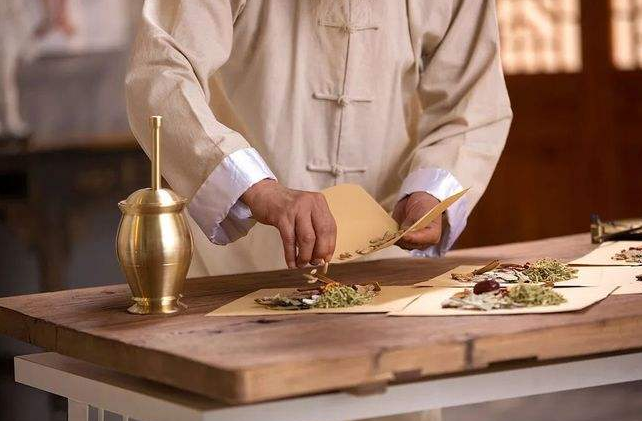
Clearing and Transforming as the General Principle, Must Distinguish Predominance Clearing heat and eliminating dampness is the general principle for treating Spleen-Stomach Damp-Heat Syndrome, but clinically there are different presentations of equal damp and heat, predominant dampness, or predominant heat, which should be carefully distinguished for treatment.Micro and Local Changes, Understanding Through TCM Theory For micro and local pathological changes, understanding should be based on TCM theory, then combined with macro and holistic differentiation to determine treatment methods and medications.Promote Comprehensive Methods, Dietary Guidance is Essential
In treating Spleen-Stomach Damp-Heat Syndrome, in addition to oral decoctions and enemas, other methods such as acupuncture, external applications, tuina, and massage should also be employed as needed based on symptoms and signs. Furthermore, dietary and labor restrictions must be clearly stated to achieve significant results.

Medication Experience
Prescription Selection
Equal Damp and Heat: Use self-formulated Qinghua Decoction (Yin Chen (Artemisia capillaris), Bai Bian Dou (Hyacinth Bean), Huang Lian (Coptis chinensis), Hou Po (Magnolia Bark), Pei Lan (Eupatorium), Bai Dou Kou (White Cardamom), Yi Yi Ren (Job’s Tears), etc.), or Gan Lu Xiao Du Dan, Er Miao Wan, Huang Qin Shi Gao Decoction with modifications.
Heat Predominant: Lian Po Decoction, Bai Hu Jia Cang Zhu Decoction.Damp Predominant: San Ren Decoction, Huo Po Xia Ling Decoction, Huang Lian Ping Wei San, Da Yuan Decoction, etc.Damp-Heat Jaundice: Yin Chen Hao Decoction, Yin Chen Wu Ling San.Damp-Heat Disturbing the Spirit: Chang Pu Yu Jin Decoction.Damp-Heat Skin Issues: Yi Yi Zhu Ye San.Damp-Heat Fever: Xin Jia Xiang Ru Decoction, Huang Lian Wen Dan Decoction, Da Yuan Decoction.Damp-Heat Diarrhea: Bai Tou Weng Decoction.
Damp-Heat Vaginal Discharge: Zhi Dai Fang.
Medication
Eliminate dampness with aromatic, warming, and draining properties; clear heat with bitter, sweet, and salty properties. Elimination of dampness can be aromatic, warming, or draining; when dampness steams upward, aromatic herbs like Huo Xiang (Agastache) and Pei Lan (Eupatorium) are suitable; when dampness obstructs the middle jiao, warming and drying herbs like Bai Dou Kou (White Cardamom) and Cao Guo (Tsaoko) are appropriate; when dampness descends to the lower jiao, light draining herbs like Yi Yi Ren (Job’s Tears) and Tong Cao (Rice Paper Plant) should be used. Clearing heat can be bitter-cold, sweet-cold, or salty-cold; bitter-cold herbs like Huang Qin (Scutellaria) and Huang Lian (Coptis) are the first choice; if heat transforms into dryness harming yin, sweet-cold herbs like Jin Yin Hua (Honeysuckle), Pu Gong Ying (Dandelion), Zhi Mu (Anemarrhena), or salty-cold herbs like Shi Gao (Gypsum) and Han Shui Shi (Cold Water Stone) should be used; for damp-heat dysentery or diarrhea, herbs like Xian He Cao (Agrimony) and Di Yu (Sanguisorba) can also be used to clear and restrain.
To transform dampness, qi regulation is essential, distinguishing between cold and warm. To eliminate dampness, qi regulation should be added, as moving qi facilitates dampness transformation. However, qi-regulating herbs can be cold or warm. For predominant dampness, choose Hou Po (Magnolia Bark) and Chen Pi (Aged Tangerine Peel) to dry dampness and regulate qi; for predominant heat, use Zhi Ke (Bitter Orange) and Zhi Shi (Unripe Bitter Orange) to clear heat and regulate qi.
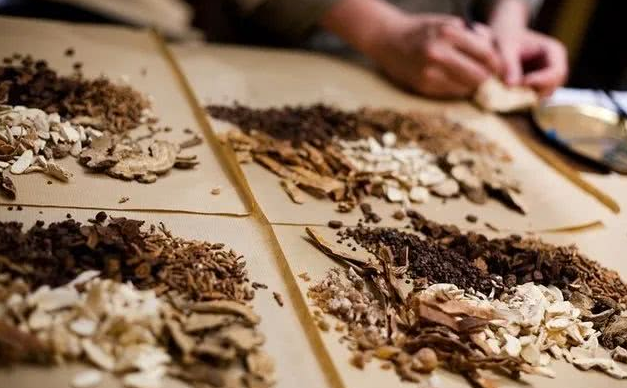
Qi stagnation often leads to blood stasis, and it is important to know how to “activate” or “transform”. Qi is the commander of blood; qi stagnation can cause blood stasis, so qi regulation should also consider blood-moving herbs. Blood-moving herbs can be divided into those that invigorate blood (like Chi Shao (Red Peony), Dang Gui (Angelica), Dan Shen (Salvia)) and those that transform stasis (like San Leng (Sparganium), E Zhu (Curcuma), and Tao Ren (Peach Kernel)), and there are also cooling blood herbs (like Dan Pi (Moutan Root), Chi Shao (Red Peony), and Hong Hua (Safflower)) and warming blood herbs (like Dang Gui (Angelica), E Zhu (Curcuma), and Hong Hua (Safflower)), which should be selected according to the syndrome.
Regulating the middle and differentiating ascending and descending is crucial. The stomach should descend, and the spleen should ascend; when the spleen and stomach’s ascending and descending functions are disordered, if the stomach qi is rebellious, it should be harmonized and descended using Ban Xia (Pinellia), Pi Pa Ye (Loquat Leaf), Xuan Fu Hua (Inula Flower), and Zhu Ru (Bamboo Shavings); if the spleen qi is sinking or clear qi fails to ascend, it should be uplifted using Sheng Ma (Cimicifuga), Ge Gen (Kudzu), Jie Geng (Platycodon), and He Ye (Lotus Leaf). For food stagnation, use Mai Ya (Barley Sprout) for grain, and Shan Zha (Hawthorn) for meat; other options include Shen Qu (Medicated Leaven) and Ji Nei Jin (Chicken Gizzard Lining).
Constipation can be due to deficiency or excess, and should be treated accordingly. For damp-heat causing heat accumulation in the bowels, cooling herbs like Da Huang (Rhubarb), Fan Xie Ye (Senna), and Hu Zhang (Japanese Knotweed) can be used; for damp turbidity obstructing the bowels, warming and unblocking herbs like Cao Guo (Tsaoko) and Hou Po (Magnolia Bark) combined with Da Huang (Rhubarb) are appropriate; for deficiency constipation, use Sheng Bai Zhu (Fresh Atractylodes) and Cang Zhu (Atractylodes); for qi stagnation constipation, regulate with Mu Xiang (Costus) and Xing Ren (Apricot Kernel).
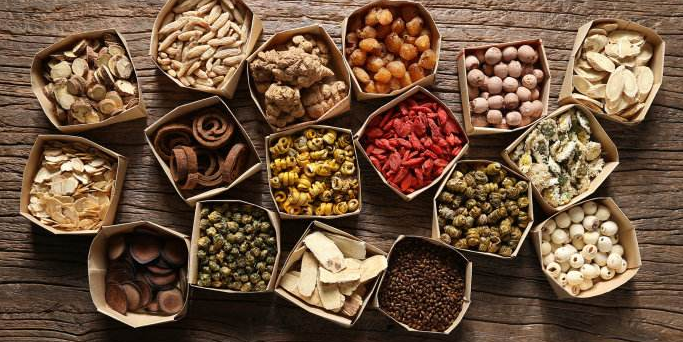
The throat is the orifice of the stomach; careful observation of heat, stasis, and phlegm is necessary. Damp-heat rising often causes throat pain or itchiness; careful examination of the throat: redness indicates heat, dark red indicates stasis, and follicular changes indicate phlegm or phlegm-stasis obstruction, which can be treated with herbs like Ma Bo (Morus), Mu Hu Die (Butterfly Pea), Cheng Qian (Chrysanthemum), and Chi Shao (Red Peony).
Strengthening the spleen requires warmth and balance, and deficiency must be assessed. Spleen-strengthening herbs are often warming, thus drying dampness; Bai Bian Dou (Hyacinth Bean), Cang Zhu (Atractylodes), and Bai Zhu (Atractylodes) are commonly used; however, if drying causes yin damage, choose Shan Yao (Chinese Yam) for its sweet and moistening properties to nourish the spleen. If deficiency is present, tonifying herbs can be added, but care must be taken to tonify without causing stagnation, to avoid obstructing dampness and generating heat. For qi deficiency, add Sheng Huang Qi (Astragalus) and Jiao Gu Lan (Gynostemma); for blood deficiency, add Ji Xue Teng (Spatholobus); for yin deficiency, add Yu Zhu (Polygonatum) and Xuan Shen (Scrophularia) or Bai Shao (White Peony) combined with Gan Cao (Licorice) for sweet and sour yin nourishment; for yang deficiency, add Pao Fu Zi (Processed Aconite) and others.
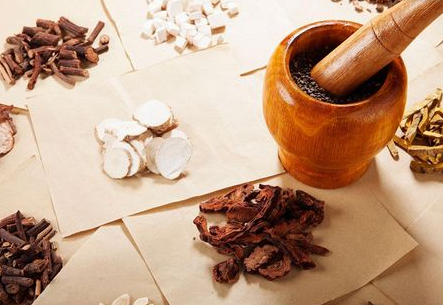
When other organs are affected, corresponding methods must be applied. For liver qi stagnation, add herbs to soothe the liver and regulate qi, such as Chai Hu (Bupleurum), Xiang Fu (Cyperus), and Chuan Lian Zi (Toosendan); for disturbed heart and insomnia, combine with calming herbs like He Huan Pi (Mimosa) and Fu Ling (Poria); if there is concurrent kidney deficiency with floating yang, and damp-heat obstructing the interior, careful assessment and medication adjustments are necessary.
Accompanying cold and heat requires clear differentiation of the disease location. If there is aversion to cold and fever, it is essential to determine whether it is exterior, interior, or half-exterior and half-interior, as well as the predominance of damp-heat. For exterior syndrome, use Huo Xiang Zheng Qi San; for half-exterior and half-interior, choose Ao Qing Qing Dan Decoction or Da Yuan Decoction; for interior damp-heat syndrome, select Gan Lu Xiao Du Dan based on the severity of damp-heat.
Treatment Insights
Yang Chunbo believes that in treating Spleen-Stomach Damp-Heat, regardless of the method used, great attention must be paid to the spleen and stomach’s transport functions, ensuring that treatment is appropriate to the condition, avoiding heavy medication for mild conditions and light medication for severe conditions, and avoiding reckless benefits, excessive purging, or aggressive attacks. Sometimes it is better to use smaller doses or divided doses rather than heavy or sudden doses that harm the “transport” function.
Regarding the formation of Spleen-Stomach Damp-Heat, it is due to “dampness causing heat,” “heat causing dampness,” or “damp-heat co-occurring”; historical physicians have had different views. From a clinical treatment perspective, Yang Chunbo tends to favor “dampness causing heat.”
Yang Chunbo believes that the difficulty in treating this syndrome lies in the “dampness” or “turbidity,” which manifests as a thick and turbid tongue coating. Wu You can achieve effective results with Da Yuan Decoction, but there are also instances of ineffectiveness. The path forward remains to be explored. Additionally, “damp-heat” often coexists with deficiency, frequently with qi deficiency, and may also include yin deficiency, yang deficiency, and blood deficiency. Tonifying deficiency often affects the transformation of damp-heat, and there are also cases where tonifying leads to damp-heat resolution, which must be carefully considered in terms of medication selection, compatibility, dosage, administration, and dosage forms.
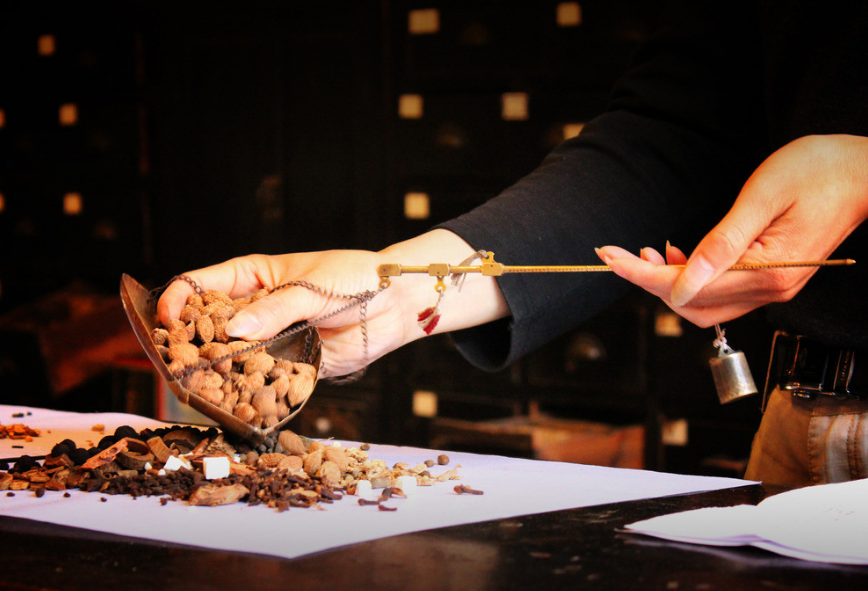
Yang Chunbo believes that this syndrome is difficult to cure quickly and prone to recurrence during treatment, which is determined by its pathological state of “yin and yang duality”; therefore, the selection of formulas and medications must be carefully considered.
Yang Chunbo believes that in treating Spleen-Stomach Damp-Heat Syndrome, medications should directly reach the disease site, which is beneficial; however, daily dietary intake must be maintained to prevent the stomach and intestines from being idle, making dietary regulation and restrictions extremely important. Of course, lifestyle, rest, and emotional adjustments should not be overlooked.
* (Source: Internet, please delete if infringing)


